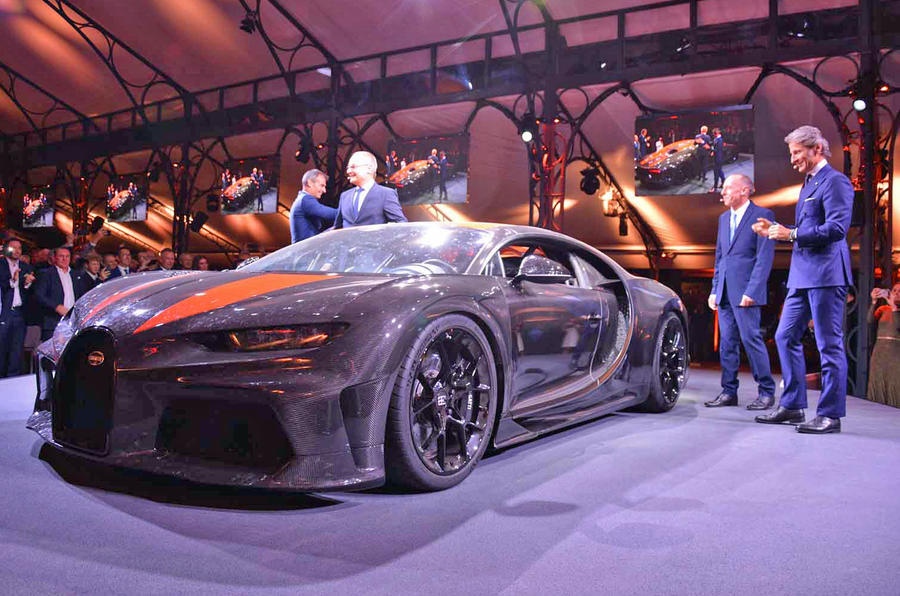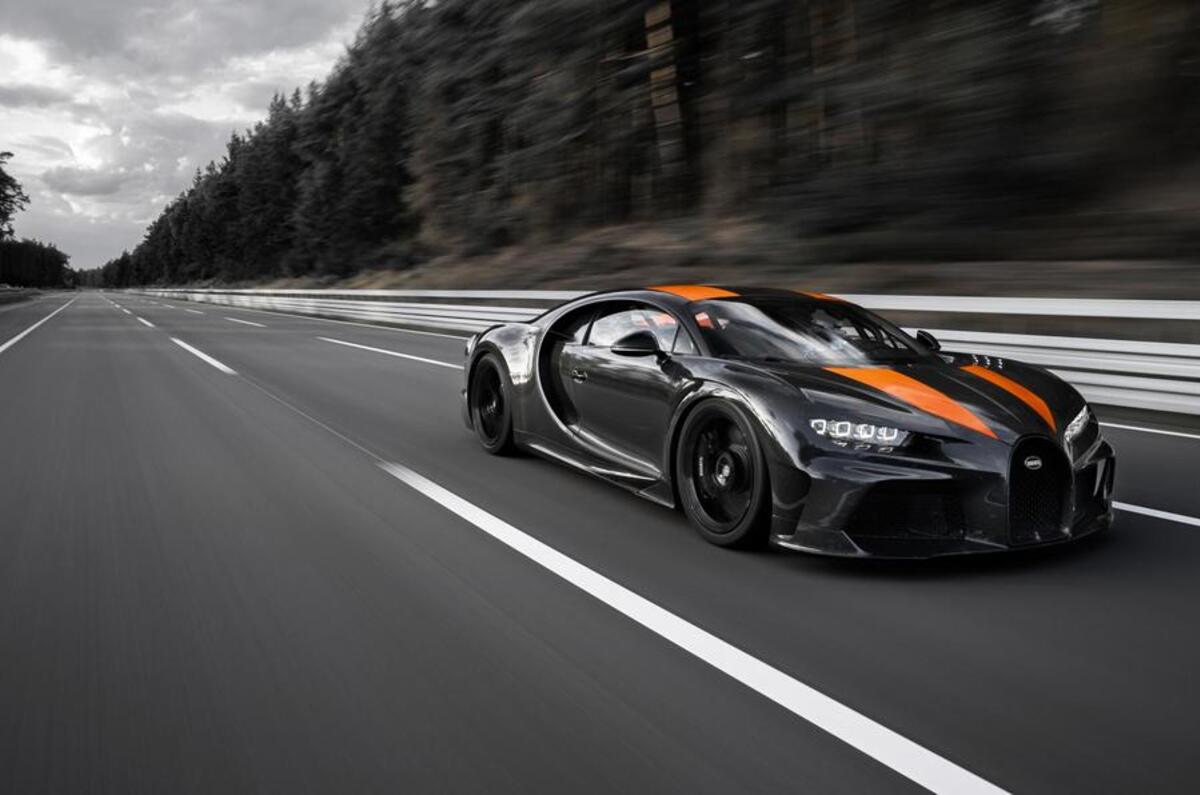And then it was done. The big three-hundred. Some 304.773 miles per hour, to be precise, has been hit by a not entirely standard production car, in the form of a modified Bugatti Chiron.
A not quite standard Chiron, then, but pretty close. And it’ll be production soon enough, when the car becomes available as a multimillion-pound limited ‘record edition’ run of this more aerodynamic, more powerful Chiron.
That’ll be sold in small numbers, granted, but there will probably be more of them than there are of any other car that might have a crack at a production car speed record.

Assuming, of course, other manufacturers find somewhere they think they can hit 305mph-plus.
A section of closed Nevada highway was the choice for Koenigsegg in 2017 and is likely to be the location of any future runs. We could have gone there too, says Bugatti, claiming that the extra altitude and occasional slope would have let the Chiron reach 319mph.
Instead it chose Ehra-Lessien, the Volkswagen group test track, because it’s safer. It swept the surface before every run, put medical teams at either end of the straight, and knows the surface so well that test driver Andy Wallace only ran the Chiron in one direction, the same way the track is usually operated. Running against the grain of the used asphalt might have overheated the tyres, and it is tyres more than anything else that dictate how safely you can run at these speeds. Michelin X-rayed the Chiron’s to make sure no radial bands were touching each other, which would generate heat.
That means that while the run was overseen by Germany’s TUV organisation, a true world record would require the car to average over two directions. But these technicalities are sometimes, officially, slightly cloudy – cars go without a speed limiter here, a rev limiter there. The short of it is that Bugatti makes a car that’ll do 300mph. That’s the important bit.
Bugatti says that, at this point, it will walk away from what is, ultimately, an increasingly pointless endeavour. While Bugatti might make Ehra-Lessien available to some Chiron customers to run up to the 261mph limiter, the 300 barrier is a speed that, as a customer, you will not achieve.
Not everybody will take that as a sign to call it a day, though. While we once thought that the McLaren F1’s speed of 240.1mph – incidentally also set by Wallace, and at Ehra-Lessien – would never be beaten, I’m not going to suggest the same thing this time.
Now that Michelin has made road car tyres that can handle these speeds, and there are companies out there with risk assessments more liberal than Bugatti’s, they’ll go to Nevada and take brave pills and post a higher speed across two directions and say it’s more official. Which in a way it will be. But it will be no more relevant, and still they won’t be remembered as the first to break 300mph.
Far from chuffed

As I write I’ve just returned from 10 days without a car. I must say, if you want to travel from not quite where you are, to not quite where you want to be, not quite when you want to, and you’d like to spend quite a while and a fair amount of money doing it, trains are ever so good.
Read more
Bugatti Chiron goes 304mph to set hypercar record​
New Koenigsegg Jesko arrives with 300mph objective
Bugatti Chiron Super Sport 300+ revealed​







Join the debate
Add your comment
Easy .....?
In the last few years technology has leapt forward, we now have a car that (unofficially) has done over 300mph (304mph), acceleration is almost blink of an Eye and you’ll miss it , Elon Musks up and coming Roadster can allegedly crack 0-60mph in under two seconds!, so speed isn’t all that nowadays because it’s so easy to do, and top speeds like this don’t apply to main roads, they’re demo runs down long Runways, the Cars are wide, long and heavy, not really suited for most main Roads. By all mean keep pushing the Envelope, but, ultimately,in the future speed won’t matter, it’s how we get there, whether we’re driving or not, fifty years from now Transport, personal transport is going to be White goods interesting....
out of curiosity
does anyone actually care? yes, the engineering etc that goes in to doing this sort of thing is commendable. However, for example, does it being quicker than a veyron actually bother anyone?
Pint of Guinness...?
Yeah, Guinness book of records don’t recognise it because it was only achieved one way.....